
The Bloomsbury Group or Bloomsbury Set was a group of associated English writers, intellectuals, philosophers and artists in the early 20th century. Among the people involved in the group were Virginia Woolf, John Maynard Keynes, E. M. Forster, Vanessa Bell, and Lytton Strachey. Their works and outlook deeply influenced literature, aesthetics, criticism, and economics, as well as modern attitudes towards feminism, pacifism, and sexuality.

Duncan James Corrowr Grant was a Scottish painter and designer of textiles, pottery, theatre sets, and costumes. He was a member of the Bloomsbury Group.
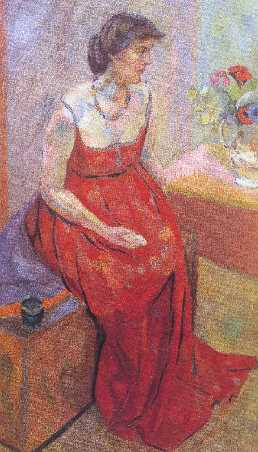
Vanessa Bell was an English painter and interior designer, a member of the Bloomsbury Group and the sister of Virginia Woolf.
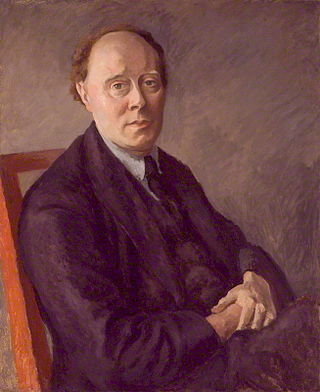
Arthur Clive Heward Bell was an English art critic, associated with formalism and the Bloomsbury Group. He developed the art theory known as significant form.

Roger Eliot Fry was an English painter and critic, and a member of the Bloomsbury Group. Establishing his reputation as a scholar of the Old Masters, he became an advocate of more recent developments in French painting, to which he gave the name Post-Impressionism. He was the first figure to raise public awareness of modern art in Britain, and emphasised the formal properties of paintings over the "associated ideas" conjured in the viewer by their representational content. He was described by the art historian Kenneth Clark as "incomparably the greatest influence on taste since Ruskin ... In so far as taste can be changed by one man, it was changed by Roger Fry". The taste Fry influenced was primarily that of the Anglophone world, and his success lay largely in alerting an educated public to a compelling version of recent artistic developments of the Parisian avant-garde.
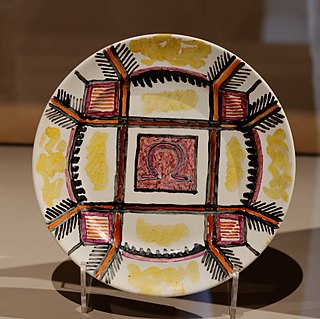
The Omega Workshops Ltd. was a design enterprise founded by members of the Bloomsbury Group and established in July 1913. It was located at 33 Fitzroy Square in London, and was founded with the intention of providing graphic expression to the essence of the Bloomsbury ethos. The Workshops were also closely associated with the Hogarth Press and the artist and critic Roger Fry, who was the principal figure behind the project, believed that artists could design, produce and sell their own works, and that writers could also be their own printers and publishers. The Directors of the firm were Fry, Duncan Grant and Vanessa Bell.

Julian Heward Bell was an English poet, and the son of Clive and Vanessa Bell. The writer Quentin Bell was his younger brother and the writer and painter Angelica Garnett was his half-sister. His relationship with his mother is explored in Susan Sellers' novel Vanessa and Virginia.
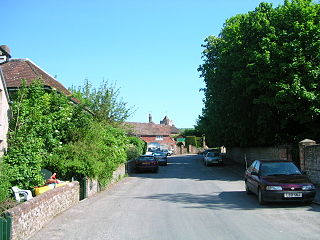
Firle is a village and civil parish in the Lewes district of East Sussex, England. Firle refers to an old-English/Anglo-Saxon word fierol meaning overgrown with oak. Although the original division of East Firle and West Firle still remains, East Firle is now simply confined to the houses of Heighton Street, which lie to the east of the Firle Park. West Firle is now generally referred to as Firle although West Firle remains its official name. It is located south of the A27 road four miles (9 km) east of Lewes.
Quentin Claudian Stephen Bell was an English art historian and author.

Angelica Vanessa Garnett, was a British writer, painter and artist. She was the author of the memoir Deceived with Kindness (1984), an account of her experience growing up at the heart of the Bloomsbury Group.
Cressida Bell is an English artist and designer, specializing in textiles, interior design, cake decoration and illustration.

Monk's House is a 16th-century weatherboarded cottage in the village of Rodmell, three miles (4.8 km) south of Lewes, East Sussex, England. The writer Virginia Woolf and her husband, the political activist, journalist and editor Leonard Woolf, bought the house by auction at the White Hart Hotel, Lewes, on 1 July 1919 for 700 pounds, and received there many visitors connected to the Bloomsbury Group, including T. S. Eliot, E. M. Forster, Roger Fry and Lytton Strachey. The purchase is described in detail in her Diary, vol. 1, pp. 286–8.
Frances Spalding is a British art historian, writer and a former editor of The Burlington Magazine.
The Bloomsbury Group plays a prominent role in the LGBT history of its day.
Life in Squares is a British television mini-series that was broadcast on BBC Two from 27 July to 10 August 2015. The title comes from Dorothy Parker's witticism that the Bloomsbury Group, whose lives it portrays, had "lived in squares, painted in circles and loved in triangles".
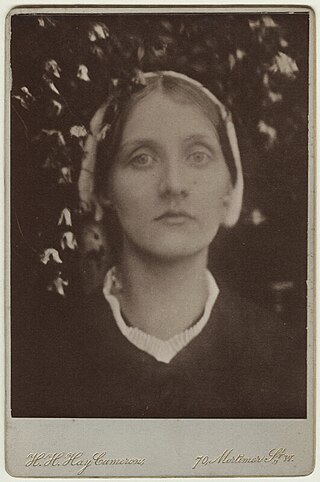
Julia Prinsep Stephen was an English Pre-Raphaelite model and philanthropist. She was the wife of the biographer Leslie Stephen and mother of Virginia Woolf and Vanessa Bell, members of the Bloomsbury Group.

Anne Olivier Bell was an English art scholar. She was part of the Bloomsbury Group and best known for editing the diaries of Virginia Woolf. As a member of the Monuments Men, she was responsible for the protection of cultural artefacts in Europe during the Second World War and earned the military rank of Major.
Henrietta Catherine Garnett was an English writer.
The Famous Women Dinner Service is a set of 50 dinnerplates, each hand-decorated by Bloomsbury Group artists Vanessa Bell and Duncan Grant. Commissioned as a dinner service without a brief by art historian and museum director Kenneth Clark in 1932, the set was made between 1932 and 1934. It represents 48 notable women, with another two plates that depict the artists, and has been recognised as a "bold, feminist statement", cementing Bell and Grant's "seminal role in feminist art history".
















